- News
- Reviews
- Bikes
- Components
- Bar tape & grips
- Bottom brackets
- Brake & gear cables
- Brake & STI levers
- Brake pads & spares
- Brakes
- Cassettes & freewheels
- Chains
- Chainsets & chainrings
- Derailleurs - front
- Derailleurs - rear
- Forks
- Gear levers & shifters
- Groupsets
- Handlebars & extensions
- Headsets
- Hubs
- Inner tubes
- Pedals
- Quick releases & skewers
- Saddles
- Seatposts
- Stems
- Wheels
- Tyres
- Tubeless valves
- Accessories
- Accessories - misc
- Computer mounts
- Bags
- Bar ends
- Bike bags & cases
- Bottle cages
- Bottles
- Cameras
- Car racks
- Child seats
- Computers
- Glasses
- GPS units
- Helmets
- Lights - front
- Lights - rear
- Lights - sets
- Locks
- Mirrors
- Mudguards
- Racks
- Pumps & CO2 inflators
- Puncture kits
- Reflectives
- Smart watches
- Stands and racks
- Trailers
- Clothing
- Health, fitness and nutrition
- Tools and workshop
- Miscellaneous
- Buyers Guides
- Features
- Forum
- Recommends
- Podcast
review
£3,000.00
VERDICT:
Great ride quality mated to an efficient power plant, but the handling might not be sharp enough for faster riders
Loads of attachment points
X35+ motor system is so easy to use
Good battery range
Comfortable ride quality
Weight can affect handling
Front end geometry is too relaxed for some
Weight:
13,470g
Contact:
At road.cc every product is thoroughly tested for as long as it takes to get a proper insight into how well it works. Our reviewers are experienced cyclists that we trust to be objective. While we strive to ensure that opinions expressed are backed up by facts, reviews are by their nature an informed opinion, not a definitive verdict. We don't intentionally try to break anything (except locks) but we do try to look for weak points in any design. The overall score is not just an average of the other scores: it reflects both a product's function and value – with value determined by how a product compares with items of similar spec, quality, and price.
What the road.cc scores meanGood scores are more common than bad, because fortunately good products are more common than bad.
- Exceptional
- Excellent
- Very Good
- Good
- Quite good
- Average
- Not so good
- Poor
- Bad
- Appalling
Merida has entered the road e-bike world with this new eScultura 400, and while it's a little more relaxed than the acoustic Scultura it sits alongside, it is still very much a bike that likes to be ridden with a bit of spirit, while allowing you to chill out a bit on the climbs. It's not the lightest, though, and that can hinder you a touch when you find yourself just above the assistance speed limit.
To ‘E’ or not to ‘E’
We've all heard about the boom in e-bike sales, and while most of those are going to be bikes more suited to urban environments, that hasn't stopped some of the big road brands getting in on the action. Which is a great thing.
We've said plenty of times in other e-bike reviews that riding one isn't cheating. Looking back at the data post-ride, what I've found is that my average heart rate for the overall ride is where it would be on a motorless bike – because I'm saving so much energy on the steep climbs (my HR can drop by around 60-70bpm) I can push much harder on the flats.
On average I'd say the Merida would give me an increase of 1.5 to 3mph average speed against a standard road bike in similar conditions.
> Find your nearest dealer here
Basically, if you're a fast, powerful rider, you won't lose out when it comes to how hard your training session is. Or if you are the type of rider who is considering electrical assistance because of advancing years or injury but don't want to give up the fast road bike, you can really exploit the extra power and carry on doing what you love.
So, that's the performance e-bike thing summarised, let's get on with how the eScultura 400 behaves.
Ride
I'm a big fan of the Scultura, having ridden plenty over the years, most recently the rim-braked model and the very lovely 7000-E from Merida's Scultura Endurance range.
What I like about them is the balanced geometry, which gives handling that is spirited enough for those of us who like to take a few chances on a fast, technical descent without alienating those who aren't the most confident of bike handlers.
I'm afraid to say, the eScultura has lost a bit of that down to very different geometry.
The head angle is just 70.5 degrees on this size, compared with 73 degrees on the normal Scultura, and the e-bike has a taller head tube, greater fork length and a much longer wheelbase.
It feels very relaxed, though this is only really highlighted at speed when going through the bends. On twisty downhills, the front end can feel a little vague and ponderous, not helped by the 13.47kg weight (much of it focused in the rear wheel) feeling like it is trying to push you through the corner. It takes a bit of adjusting to, and can catch you out if you're not thinking about it.
Thankfully, the eScultura offers a good level of feedback through its aluminium alloy frame and carbon fork. It lets you know what is going on, which means you can scrub off some speed before you disappear over the bank as you've run wide and missed the apex.
It's not a bad handling bike, just not quite as 'on it' as I was hoping for – after all, it's still a road bike, so I was expecting a bit more precision, like the acoustic Scultura.
High-speed descents aside, though, the eScultura is a very pleasant bike to ride.
Merida's designers have a knack of delivering a decent ride quality from their aluminium frames and that hasn't changed here, helped by the fact that the eScultura can take some fairly wide rubber, and coming with 32mm as standard.
It's definitely a grand tourer, allowing you to cover plenty of miles in plenty of comfort, and should you want to get the power down on a flat section the steep 75-degree seat angle gives you a forward seating position to help you get the most out of your muscles.
Revisiting the weight for a moment... In the UK the motor has to cut out at 25kph (15.5mph), and when riding something like the super-bling Scott Addict eRoad Premium, that really isn't an issue.
Without the included booster battery and just using the same battery/motor setup as the Scultura, it weighed just 10.75kg, so the motor only really kicked in on the steepest of hills.
If I was on a long, steady rise, for instance, and doing 16-17mph, say, it was no big deal just pushing on and letting my legs do the work. On the eScultura, though, carry a bit of speed into the hill and the weight is soon noticeable; in places where I'd normally be travelling at over the ebike speed limit on a normal bike, it became more pleasurable to drop back low enough for the motor to kick back in.
This actually makes the eScultura less efficient at times – you are going slower and using the battery more.
How far can you go?
Well, who knows? Mahle claims you are looking at around 75km (46 miles) but it all comes down to terrain, conditions and how you use the motor's power levels.
My personal experience is that on one of my favourite testing loops of just over 50 miles and 880m of climbing, I'd be using around 50 per cent of the battery life, and that's while playing around with the modes.
A 30-mile, reasonably flat route and I'd barely be knocking 10 per cent off, as I just wasn't using the motor because my speed was always above the limiter.
It's worth noting that the Mahle motor doesn't give any noticeable resistance when the motor isn't being used, it just feels like you are riding a standard road bike.
Dave's been riding the similarly specced Cannondale Supersix Evo Neo 3, and you can watch the video here to get a glimpse of battery life on his 300km trip from Bath to Colchester.
The power plant
There are a fair few motor systems available now, but the Mahle Ebikemotion X35+ seems to be the go-to option for many of the road bikes we've seen.
I like it for its smooth operation. It doesn't have the power to give you a surge off the line like some crank-based motors, the rear hub option here just gives you a gentle nudge off the line, like a cycling buddy resting a hand on your back during a group ride.
You are still getting a 40Nm boost from the 250 watt-hour battery/motor combination, so pulling away from the lights seated will still see you easily maintain your position in traffic if you're in a built-up area.
As your speed changes you never really feel the motor kicking in or out, which is good – it's a very subtle transition.
It's so easy to use, too. The iWOC control button on the top tube turns the motor on/off and allows you to scroll through the three power modes with ease while riding.
The LED-lit button tells you what mode you are in, and also shows battery life. Bluetooth connectivity is sorted so you can see precise data on the app and record rides if you wish.
The whole system weighs just 3.5kg and is so well designed you can barely tell the eScultura is an e-bike at all unless you get really close.
The battery sits inside the down tube while the charging port sits at the seat tube junction, with all wiring running internally, and there is the option of adding a range-extender bottle cage battery.
Frame and fork
The eScultura frame has been beefed up over the standard model because of the extra torque being put through the rear end thanks to the motor, but it's all well hidden by the deep red paint job.
Probably the biggest boon is the massive tyre clearance, which at 45mm on 700C or 47mm on 650B wheels puts this thing in gravel bike territory, somewhere that slacker geometry could come into play if you want to take to some gentle byways or canal paths.
Even if you fit mudguards that maximum tyre size only drops to 42mm on 700C wheels.
It's a good looking frame all told, and follows the common theme of having a sloping top tube to increase the amount of exposed seatpost to promote a bit of flex, and keeping the tubes on the top half of the frame slender for added comfort.
The lower half of the frame is chunkier for stiffness, while the head tube is 1 1/2in diameter to cope with braking and steering stresses.
There are mounts aplenty for bottle cages – five positions overall.
The full-carbon Mission CX CF3 fork offers plenty of stiffness to deal with the heavy braking loads without bringing any harshness to the front end.
The bike comes in five sizes, ranging from XS through to XL, which have top tubes of 525mm and 585mm respectively.
When it comes to the geometry, this medium model has a top tube length of 555mm, head tube of 175mm and a seat tube length of 510mm.
The chainstays are a lengthy 431mm, with the wheelbase coming in at 1,055mm.
All of this leads to stack and reach figures of 597mm and 395mm.
Finishing kit
The eScultura 400 is based around a Shimano 105 groupset with a 50/34-tooth chainset and an 11-32T cassette.
It's a cracking groupset that delivers on performance when it comes to braking and shifting, and suits the no-nonsense style of the Merida's frame.
It's a decent spread of gears that works well with the assistance of the battery for all sorts of terrain.
As for the rest of the kit, it's all Merida-branded aluminium components and it does the job it needs to without really screaming out for any upgrades from a performance or comfort point of view.
The handlebar has a shallow drop that'll work for riders of all shapes and flexibility levels, while the stem is a touch shorter than you'd find on many bikes of this size.
The seatpost is nothing flash but is easily adjusted, and the saddle offers decent levels of comfort.
Wheels and tyres
The wheels are Merida's Expert SL rims, which measure 17mm internally so not exactly up with the latest trend of wide rims that are better suited to bigger tyres.
That said, they certainly seemed robust enough during the test period. Obviously, they are going to be difficult to upgrade because of the motor being in the rear hub, but there is no real reason to.
Tyre-wise, we're looking at Maxxis Pursuer front and rear. Grip levels are fine, and the rolling resistance isn't bad either. They're reliable rather than sporty, and though I never really found them to hold the eScultura back, if you want a faster ride and a little more feedback then I'd definitely upgrade to something a little more sprightly.
Value
The eScultura 400 is the only model in the range, and it'll set you back £3,000.
That's pretty much the same as the Ribble Endurance SLe with a similar build and motor system (£2,999). The Ribble gets a carbon fibre frame, though, which is a big step up from the alloy of the Merida.
> Read more e-bike reviews on ebiketips
Canyon offers its Endurace:ON 7.0 for £2,999 as well, and it too has an aluminium frame, although a different motor system, using the Fazua Evation which is based around the bottom bracket area.
It dishes out a bit more torque at 60Nm but is about a kilo heavier, resulting in an overall weight of over 15kg, which Jack found to be a hinderance when he reviewed it. It also comes with 1x gearing, which brings its own limitations on the road.
> Buyer’s Guide: 18 of the best 2021 electric road bikes
The Boardman ADV 8.9e uses the same motor system as the Canyon and also comes with a 1x groupset, SRAM Apex 1 in this case, and will set you back £2,699.
Conclusion
The eScultura has lost some of the characteristics of the analogue Scultura when it comes to handling and weight, and that just takes the shine off for me. It feels a little watered down and I think that's a bit of a shame.
I really see a place in the road biking world for e-bikes; the assistance they can deliver really is a boost, alongside making you work hard, which makes for a clever combination. But that shouldn't come at the cost of making things more relaxed elsewhere.
Overall, the eScultura is a good bike, but for me it just lacks that road bike fun.
Verdict
Great ride quality mated to an efficient power plant, but the handling might not be sharp enough for faster riders
road.cc test report
Make and model: Merida eScultura 400
Size tested: Medium, 55.5cm
About the bike
List the components used to build up the bike.
Merida lists:
DRIVE UNIT: MAHLE X35+ Hub Engine
BATTERY: MAHLE B1-C
BATTERY CHARGER: MAHLE CHARGER-C
SPEED SENSOR: MAHLE PAS Sensor
RIM MERIDA: Expert SL
HUBS: VP CLK170F
FRONT TYRE: Maxxis Pursuer
REAR TYRE: Maxxis Pursuer
HUBS: MERIDA EXPERT SL
CHAINWHEEL: Shimano 105
CRANK SIZE: 170 mm-XS/S/SM/ML, 175 mm-L/XL
BOTTOM BRACKET: Shimano BSA
CASSETTE: Shimano 105
STEM SIZE: 80 mm-XXS/XS, 90 mm-S, 100 mm-SM/ML, 110 mm-L/XL
HANDLEBAR: MERIDA Expert CW
GRIP: MERIDA ROAD EXPERT
SEAT: POST MERIDA EXPERT CC
SADDLE: MERIDA COMP SL
SEAT CLAMP: MERIDA EXPERT
Tell us what the bike is for and who it's aimed at. What do the manufacturers say about it? How does that compare to your own feelings about the bike?
Merida says, "Our non-assisted 'classic' SCULTURA has been the pillar of our road bike range for a number of years and has helped our professional road teams and amateur road riders alike to reach their goals. However, more and more of us are sometimes looking for the 'helping hand' of an e-motor while preferring to keep the sleek and stylish silhouette of a non-assisted bike. While not necessarily seeking the full e-motor support for the entire ride, we are keen to have the e-support available when needed while also having the option to easily pedal the bike without too much added weight or extensive motor drag. This is not just on the wishlist for commuters, mountain bikers and leisure riders, but also for the more tarmac-biased road riders out there. With that in mind, we have created the e-version of our 'classic' SCULTURA - the eSCULTURA."
The motor system works very well with the bike to give you smooth and simple assistance.
Where does this model sit in the range? Tell us briefly about the cheaper options and the more expensive options
This is the only bike in the range.
Frame and fork
Overall rating for frame and fork
8/10
Tell us about the build quality and finish of the frame and fork?
It's well made and finished thanks to a tough paint job.
Tell us about the materials used in the frame and fork?
The frame is constructed from aluminium alloy while the fork is full carbon fibre.
Tell us about the geometry of the frame and fork?
The geometry is quite slack for a road bike, having a very shallow head angle.
How was the bike in terms of height and reach? How did it compare to other bikes of the same stated size?
I've mentioned the stack and reach figures in the review; I wouldn't say there is really anything out of the ordinary for a bike of this size.
Riding the bike
Was the bike comfortable to ride? Tell us how you felt about the ride quality.
Yes, comfort levels are good, both from the components and the frameset.
Did the bike feel stiff in the right places? Did any part of the bike feel too stiff or too flexible?
Stiffness is ideal for a bike of this kind. You can see that the rear of the frame is overbuilt to cope with the added torque from the motor.
How did the bike transfer power? Did it feel efficient?
It's pretty good in this respect, although the weight of the Merida can hamper things at times.
Was there any toe-clip overlap with the front wheel? If so was it a problem?
No, none.
How would you describe the steering? Was it lively neutral or unresponsive? Neutral.
Tell us some more about the handling. How did the bike feel overall? Did it do particular things well or badly?
The steering isn't quite as quick as I would like on a bike of this style, because of the relaxed geometry.
Which components had the most effect (good or bad) on the bike's comfort? would you recommend any changes?
The saddle – Merida's own – is comfortable; I got on well with the shape.
Which components had the most effect (good or bad) on the bike's stiffness? would you recommend any changes?
The stem and handlebar dealt with all of the forces I put through them.
Which components had the most effect (good or bad) on the bike's efficiency? would you recommend any changes?
The X35+ motor system adds massively to the efficiency of the Merida.
Rate the bike for efficiency of power transfer:
8/10
Rate the bike for acceleration:
7/10
Rate the bike for sprinting:
7/10
Rate the bike for high speed stability:
7/10
Rate the bike for cruising speed stability:
8/10
Rate the bike for low speed stability:
8/10
Rate the bike for flat cornering:
8/10
Rate the bike for cornering on descents:
7/10
Rate the bike for climbing:
7/10
The drivetrain
Rate the drivetrain for performance:
9/10
Rate the drivetrain for durability:
8/10
Rate the drivetrain for weight:
8/10
Rate the drivetrain for value:
6/10
Tell us some more about the drivetrain. Anything you particularly did or didn't like? Any components which didn't work well together?
The Mahle motor system works very well indeed, synchronising nicely with the gear ratios of the Shimano 105 groupset.
Wheels and tyres
Rate the wheels for performance:
7/10
Rate the wheels for durability:
8/10
Rate the wheels for weight:
6/10
Rate the wheels for comfort:
7/10
Rate the wheels for value:
6/10
Tell us some more about the wheels.Did they work well in the conditions you encountered? Would you change the wheels? If so what for?
A decent enough entry-level set of wheels that'll deal with the daily rigours of road riding.
Rate the tyres for performance:
7/10
Rate the tyres for durability:
8/10
Rate the tyres for weight:
7/10
Rate the tyres for comfort:
7/10
Rate the tyres for value:
6/10
Tell us some more about the tyres. Did they work well in the conditions you encountered? Would you change the tyres? If so what for?
Decent enough tyres that offer reasonable grip and rolling resistance.
Controls
Rate the controls for performance:
7/10
Rate the controls for durability:
8/10
Rate the controls for weight:
7/10
Rate the controls for comfort:
7/10
Rate the controls for value:
6/10
Tell us some more about the controls. Any particularly good or bad components? How would the controls work for larger or smaller riders?
The alloy finishing kit does the job and the shallow handlebar means easy access to the drops.
Your summary
Did you enjoy riding the bike? On the whole, yes.
Would you consider buying the bike? I'd prefer something with slightly sharper handling.
Would you recommend the bike to a friend? Yes
How does the price compare to that of similar bikes in the market, including ones recently tested on road.cc?
It's around the same sort of price as the Canyon and Boardman I mention in the review, but it is up against some tough opposition from Ribble.
Rate the bike overall for performance:
7/10
Rate the bike overall for value:
5/10
Use this box to explain your overall score
The eScultura is a nice bike to ride, and comfortable too for a stiff aluminium frame. The slacker geometry just takes the edge off the handling, though, for what is a speed-orientated bike.
About the tester
Age: 42
I usually ride: This month's test bike My best bike is: B'Twin Ultra CF draped in the latest bling test components
I've been riding for: Over 20 years I ride: Every day I would class myself as: Expert
I regularly do the following types of riding: time trialling, commuting, club rides, sportives, fixed/singlespeed,
Since writing his first bike review for road.cc back in early 2009 senior product reviewer Stu has tested more than a thousand pieces of kit, and hundreds of bikes.
With an HND in mechanical engineering and previous roles as a CNC programmer/machinist, draughtsman and development engineer (working in new product design) Stu understands what it takes to bring a product to market. A mix of that knowledge combined with his love of road and gravel cycling puts him in the ideal position to put the latest kit through its paces.
He first made the switch to road cycling in 1999, primarily for fitness, but it didn’t take long for his competitive side to take over which led to around ten years as a time triallist and some pretty decent results. These days though riding is more about escapism, keeping the weight off and just enjoying the fact that he gets to ride the latest technology as part of his day job.
Latest Comments
- thrawed 16 min 5 sec ago
And if the money spent was specifically earmarked for active travel I would rather an extra metre of segregated cycle lane somewhere else.
- Bungle_52 31 min 54 sec ago
Well now I've heard the excuses and had time to digest them I'm not impressed to say the least....
- Velophaart_95 41 min 22 sec ago
You could always try riding flats and a pair of normal trainers. Works for lots of people who aren't wannabe pro racers......
- zwingi 45 min 52 sec ago
If he was really bleeding to death i would have kept him talking
- rivers 1 hour 55 sec ago
I had 2x bikes stolen from my shed a couple of years ago. I managed to recover one- not through the assistance of the police mind. I knew who did...
- Rendel Harris 1 hour 32 min ago
Definitely legal and a number of teams have used them, I remember an interview with IPT's chief technician a couple of years back where he revealed...
- slc 1 hour 43 min ago
I cycled up Marsh Lane yesterday, and went through the bus gate behind the new number 16 bus (temple meads to kingswood via barton hill). So that...
- Surreyrider 1 hour 43 min ago
If I had to pick an annual race (bar Covid) I'd go for Paris-Roubaix....
- hawkinspeter 3 hours 1 min ago
I share that hope too. I think it's slightly more complicated as the lower courts ordered that he had to be returned and now the Supreme Court have...
- Hirsute 4 hours 2 min ago
Although since September:...














































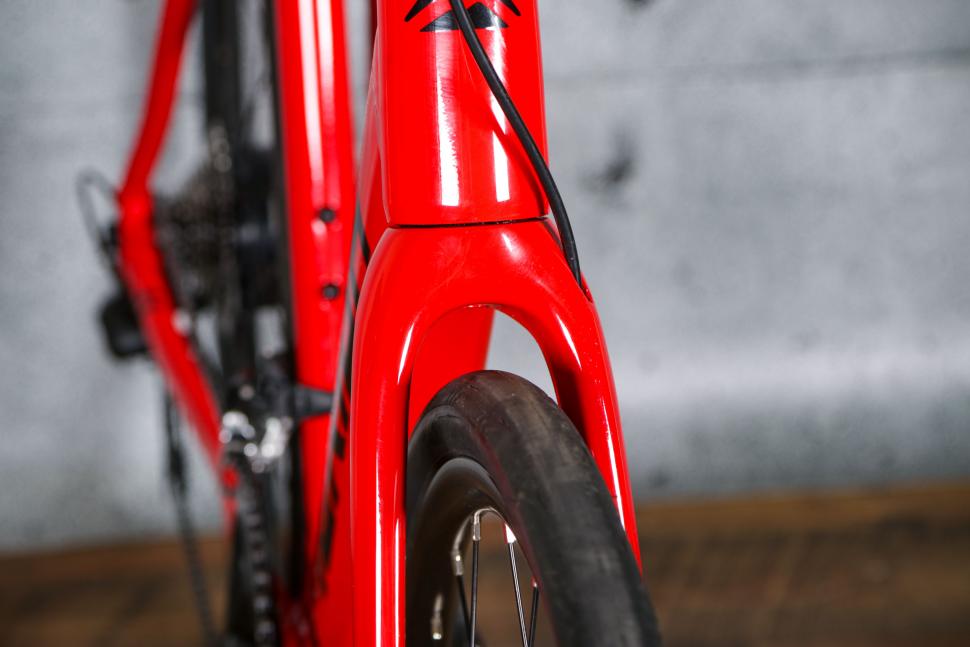
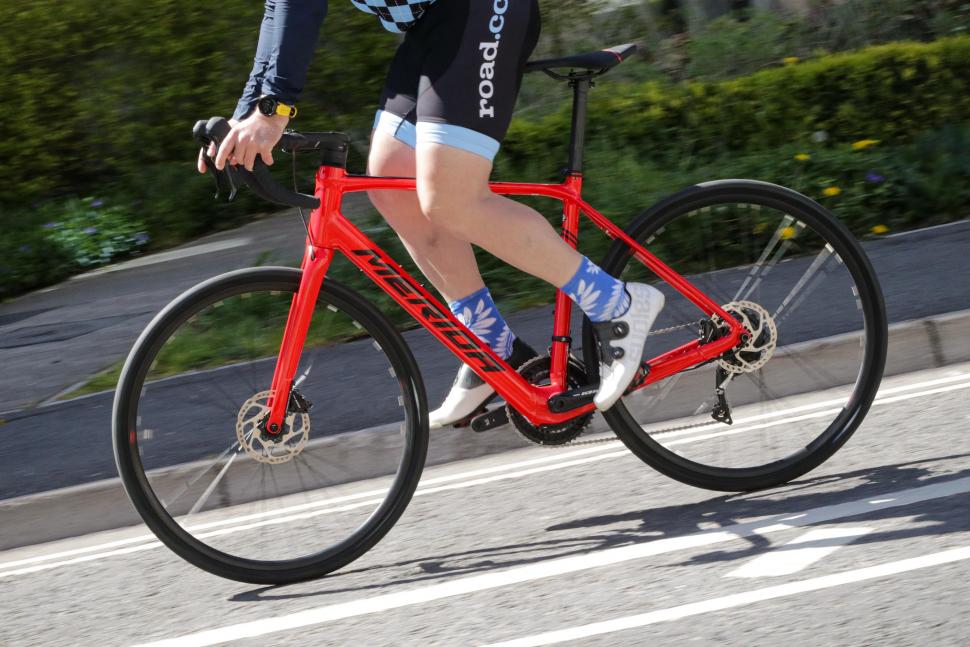
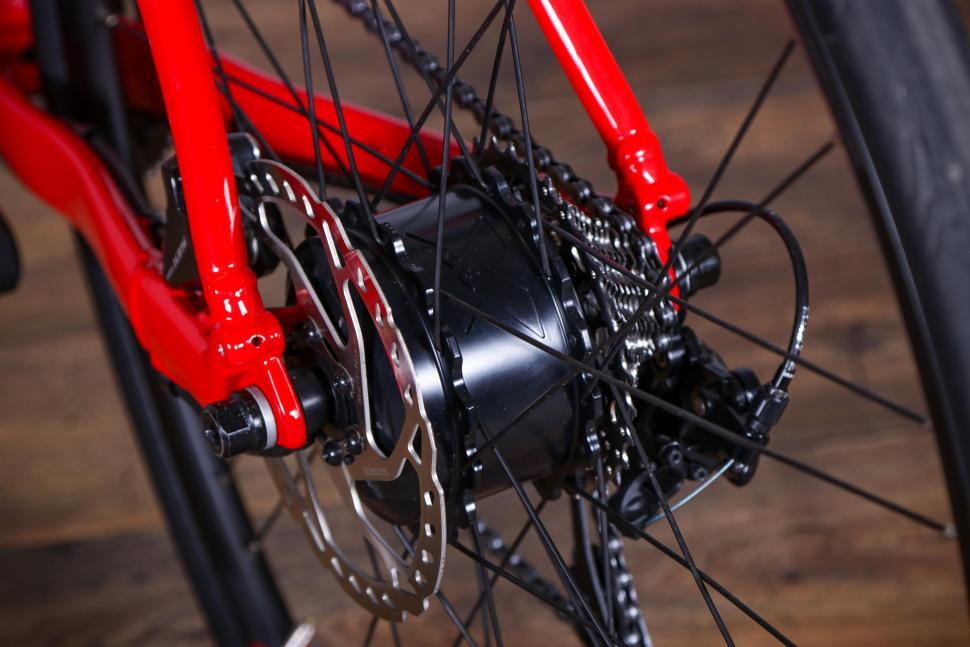
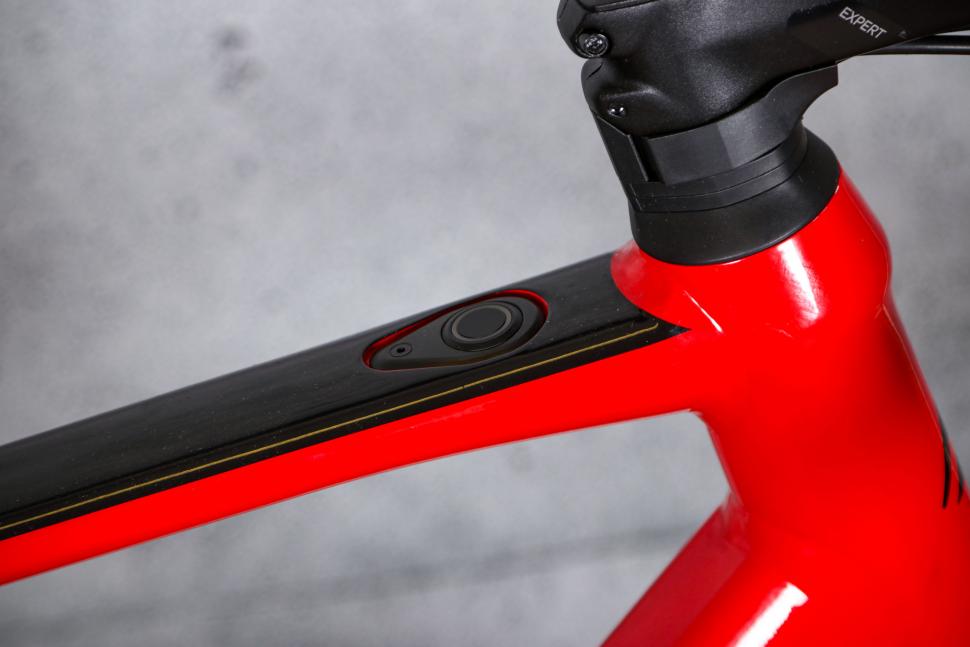
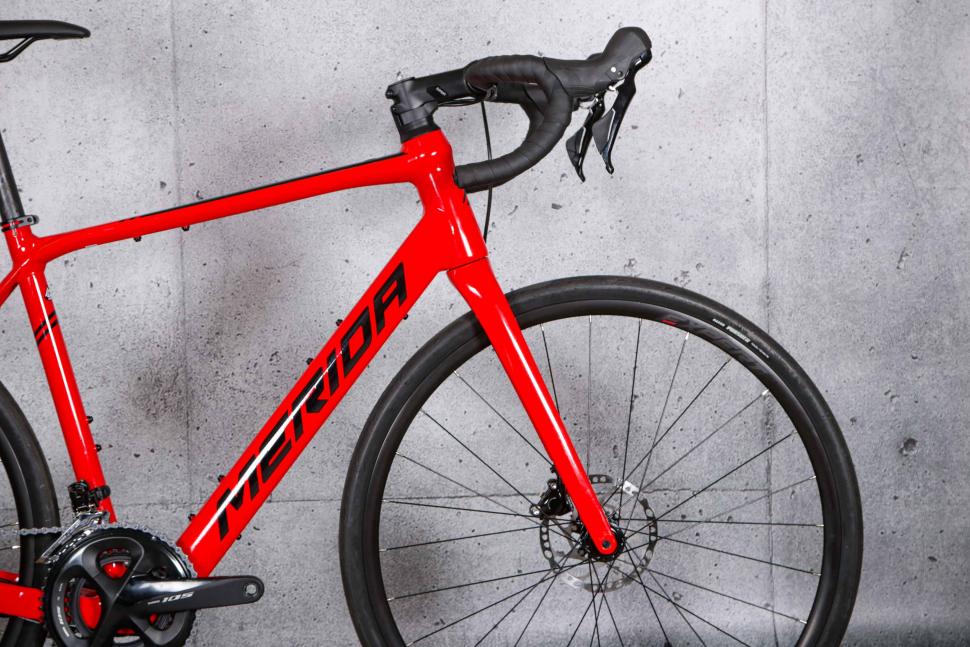
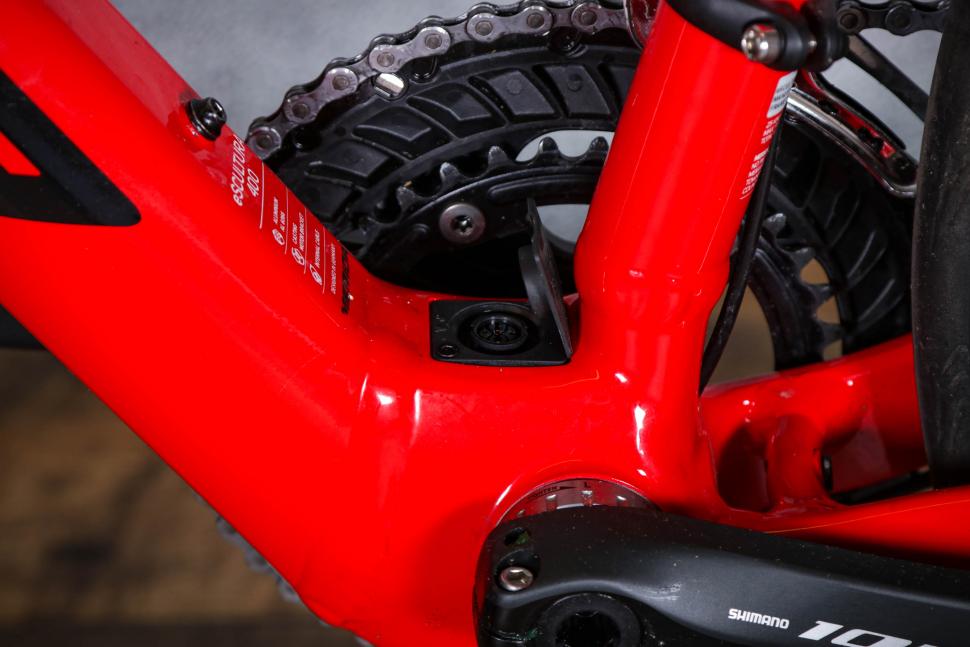






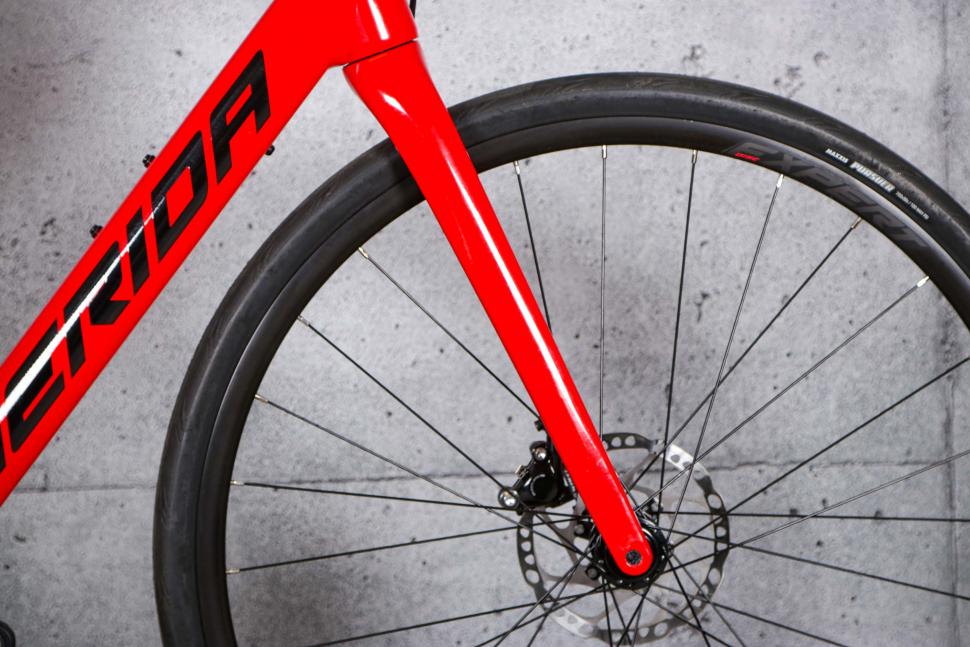
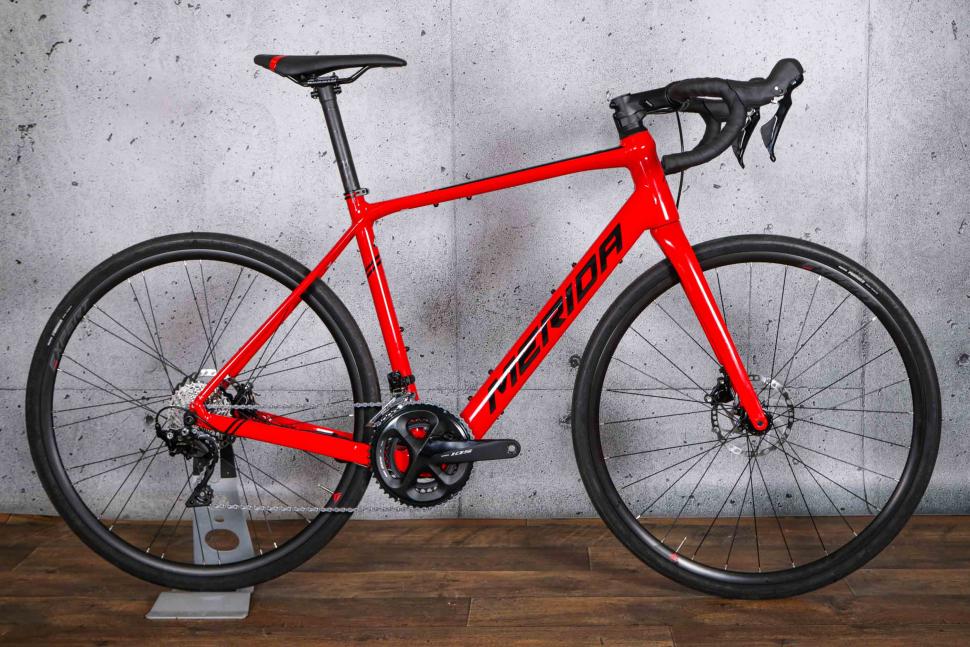
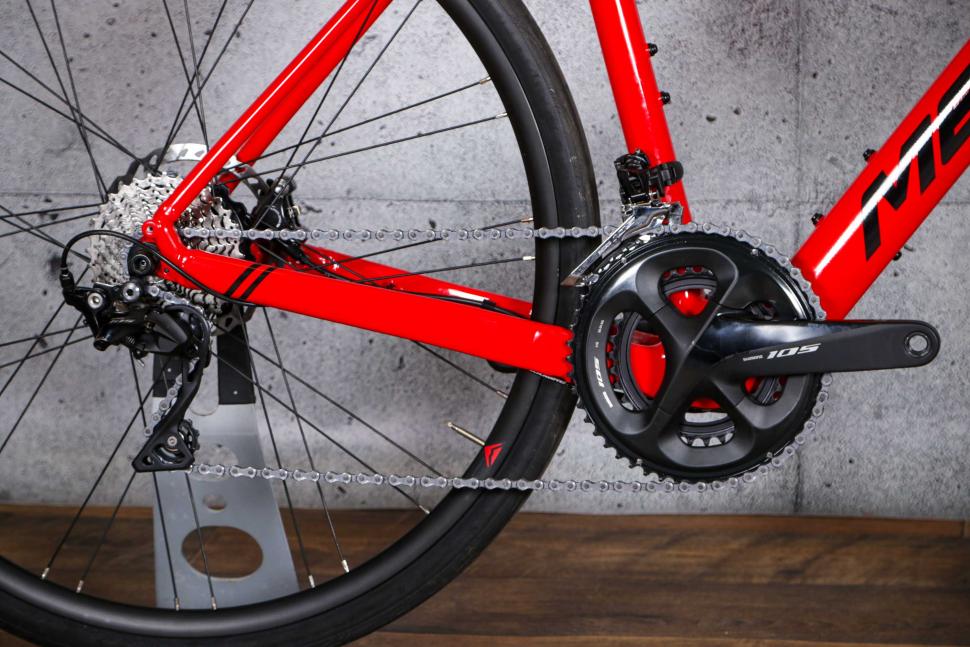

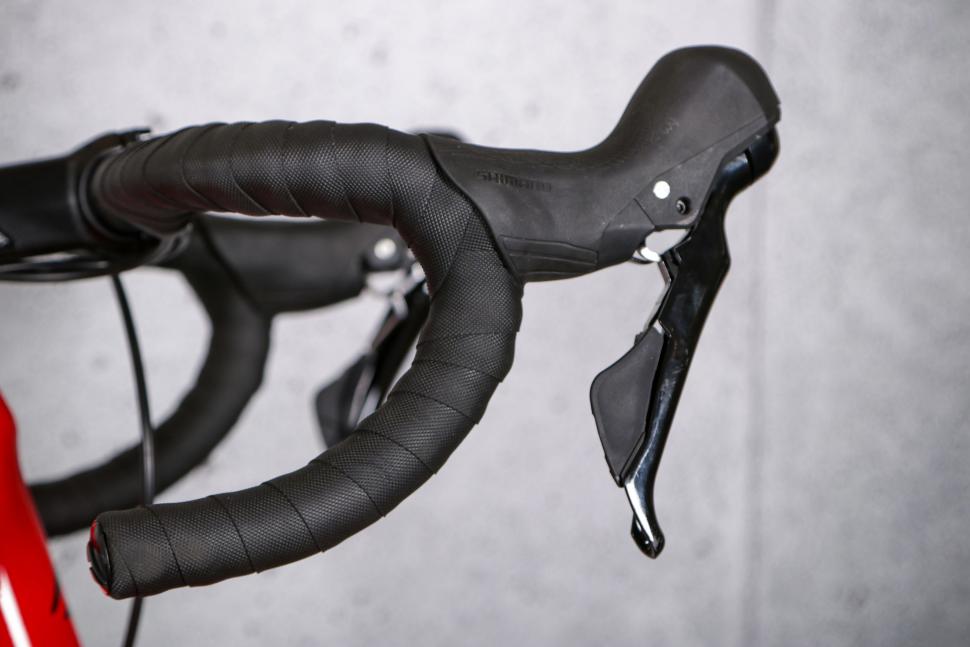

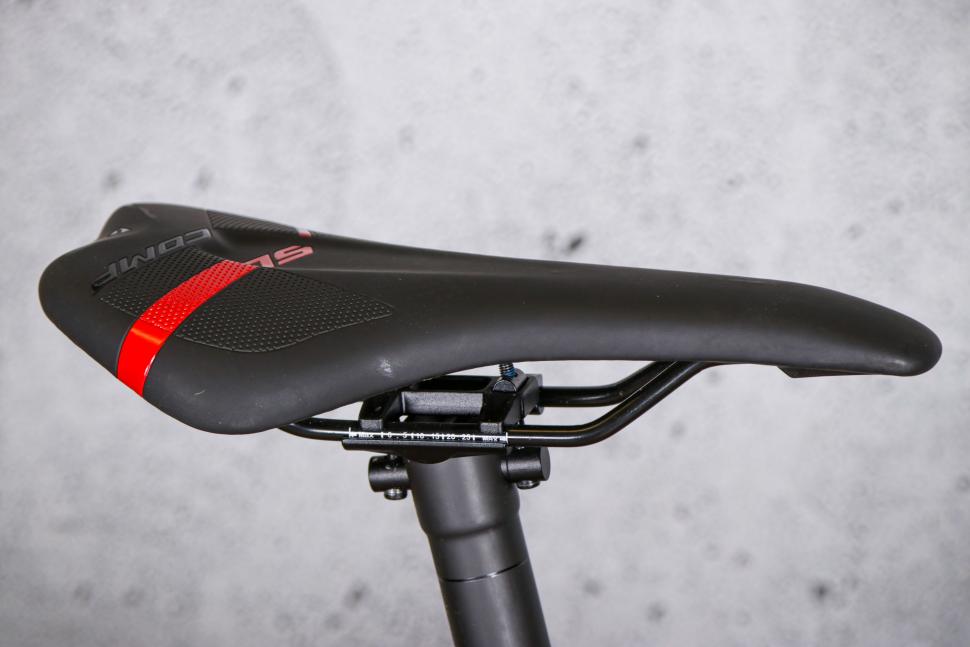
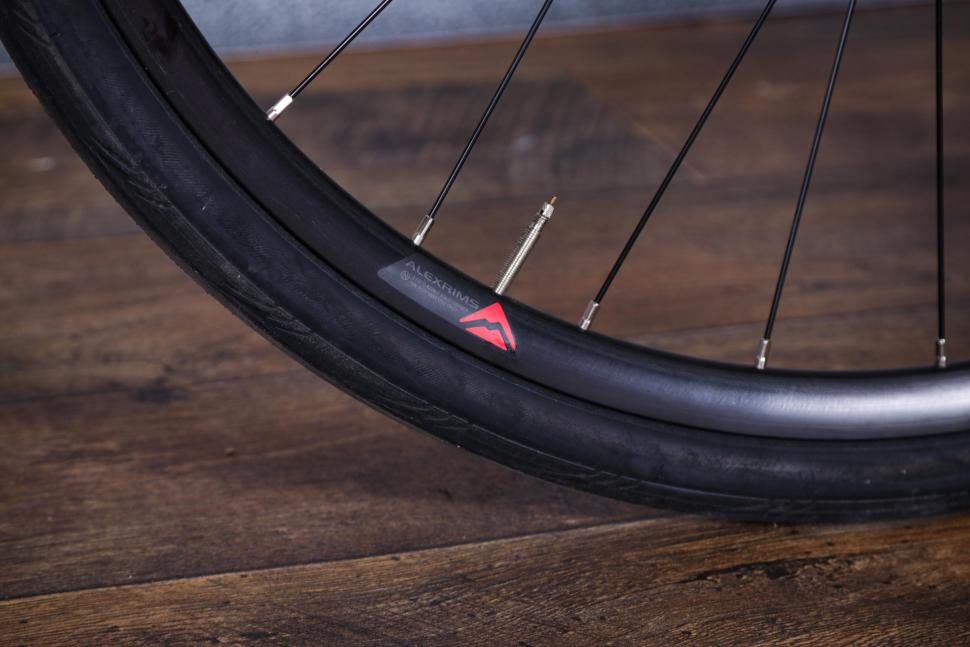
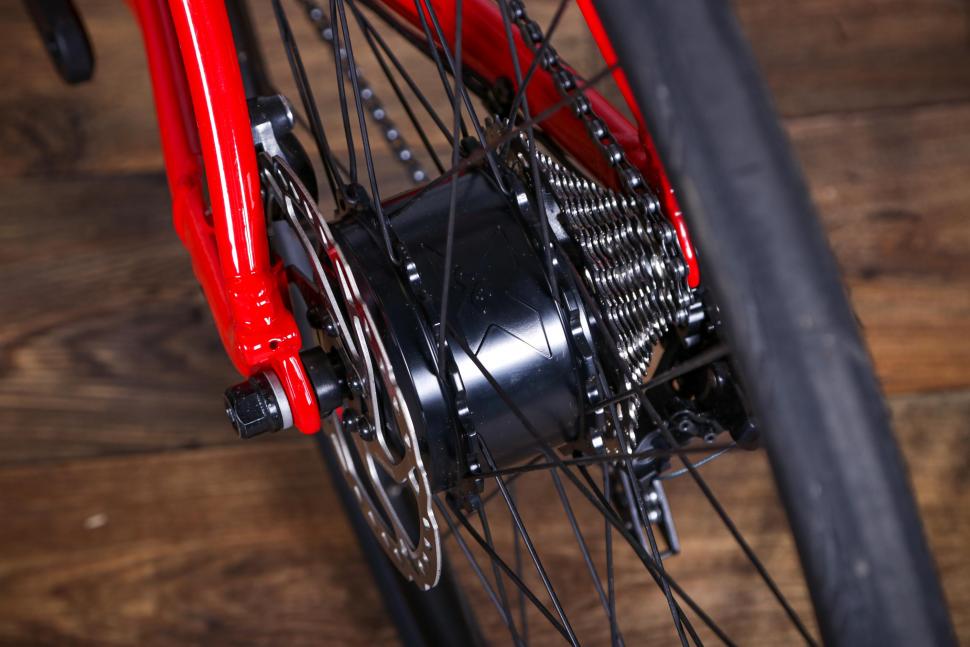

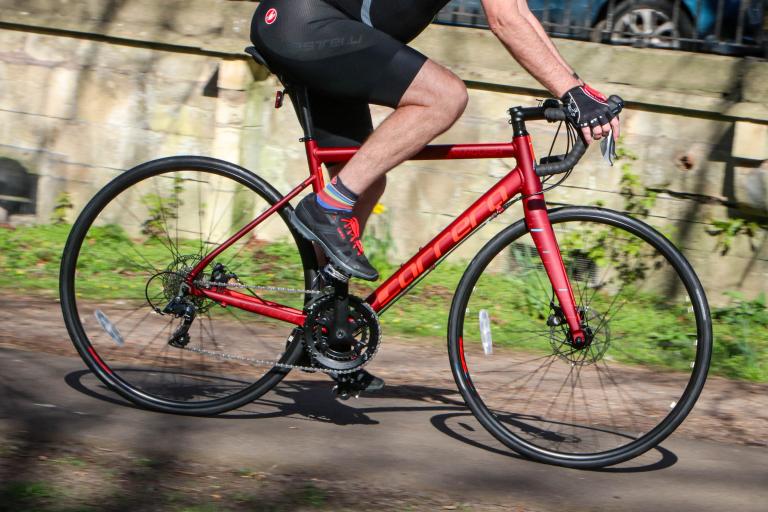


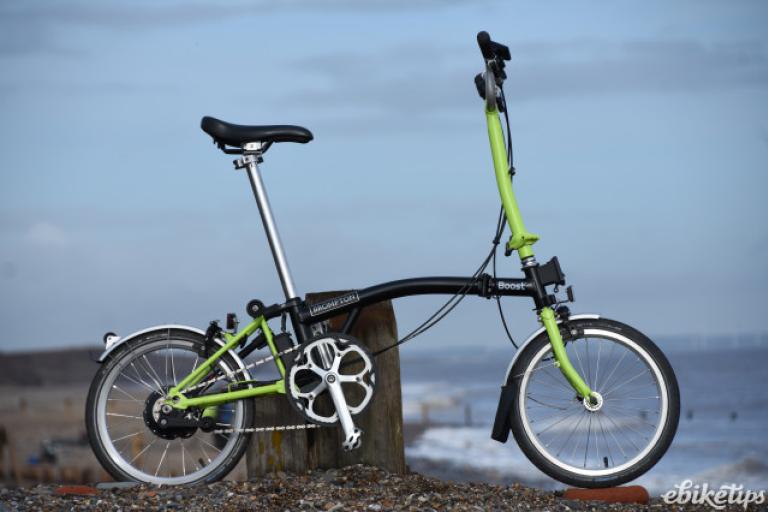
Add new comment
3 comments
On the handling, climbing and weight issues... If you were to consider this for a slower rider, does it start to make more sense?
I'm not alone in not worrying about no assistance over 25 km/h on a climb because that's unrealistic for a middle aged weekend rider and the people I ride with. Slower descending for those of us old enough to be risk averse too?
With all those mounting points (and what seem to be eyelets at the dropouts) is there a nod to bike packing - what used to be the light, fast tourer market?
Comfort, tyre clearance, lowish gearing... Could change the tyres and make a light gravel-capable machine. Starting to look as if the design compromises have perhaps been made to broaden the appeal.
The problem is that it's called the Scultura, after their lightweight race machine.
If they want an e-bike that has a wider than race bike appeal then they should make a eSilex. oh, wait, they have, but it has exactly the same frame as the eScultura.
As I've said below, this use of the same frame across three models compromises all three and smacks of something being rushed through to manufacturer and/or major design and manufacturing cost cutting.
I think they might have gotten away with it if they only had the eSilex and eSpeeder share the same frame. The eScultura requires something different.
The issues you raise with this bike are I think down to the fact that Merida have decided to cut corners with their road based e-bikes by using the same frame for all three of them.
I like Merida, but they are also really frustrating. They have a habbit of coming up with some real gems (Ride Carbon, analogue Sultura being two examples), but they are generally mixed in with some pretty average bikes, and the value for money seems to be dropping.
In the case of the eScultura, it appears to share the same frame as the eSilex and eSpeeder (although the eSilex has a different fork, all three seem to have the same geometry). I understand that this helps save development time and cost, and reduce manufacturing cost, but it means that all three bikes are in some way compromised. That might be fine if the price is really competetive, but its not.